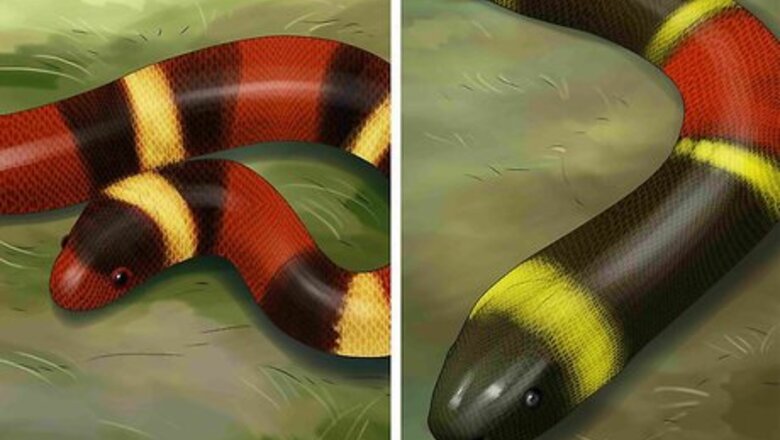
views
Looking at the Snake's Coloring
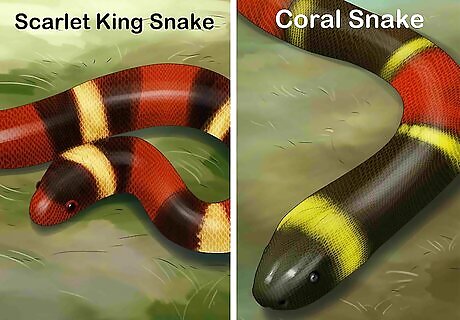
Examine the snake's ring pattern. Determine if red and yellow rings are touching; if so, this is a venomous coral snake. This simple color check is the easiest way to tell the difference between a coral snake and a scarlet king snake in the US. On a coral snake, the ring pattern is red, yellow, black, yellow, red. In the case of a scarlet king snake, the ring pattern is red, black, yellow, black, red, or maybe blue.
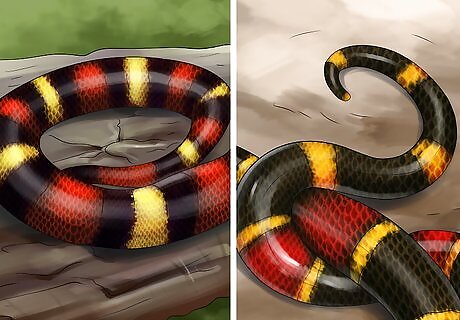
See if the snake has a black and yellow tail. The venomous coral snake's tail has only black and yellow bands with no red. The non-venomous scarlet king snake's band pattern remains the same throughout the length of his body.
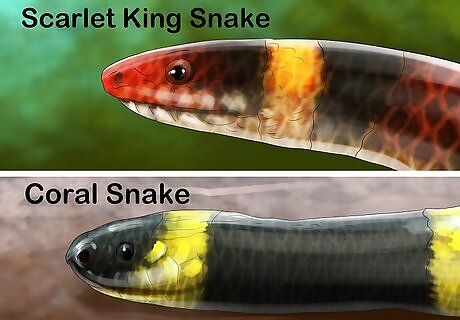
Look at the color and shape of the snake's head. Determine if its head is yellow and black or red and black. The coral snake's head is black, with a short snout. The scarlet king snake's head is mostly red with an elongated snout.

Learn rhymes to tell the difference between the two snakes. People who live in regions where coral and scarlet king snakes are common have made up these easy-to-remember rhymes to help figure out which is which: Red touches yellow, kills a fellow. Red touches black, friend of Jack. Red touches yellow, kills a fellow. Red touches black, venom lack. Red touches yellow, death says hello. Black touches red, keep your head. Yellow touches red, you'll be dead. Red touches black, eat Cracker Jacks. Red touches yellow, you're a dead fellow. Red touches black you're all right Jack.
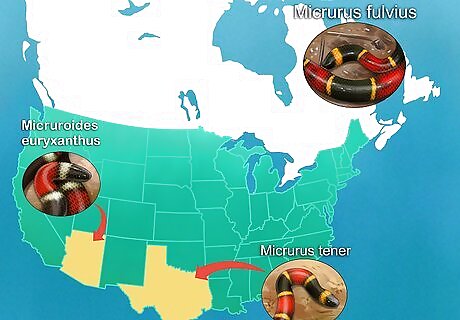
Remember that these rule apply only to snakes in the US. The suggestions in this article only reliably apply to coral snakes native to North America: Micrurus fulvius (Eastern or common coral snake), Micrurus tener (Texas coral snake), and Micruroides euryxanthus (Arizona coral snake), found in the southern and western United States. Unfortunately, elsewhere in the world, the patterning can be quite different and no assumptions can be made about venomous or non-venomous natures of the snake without knowing the actual snake's species. This means that they rhymes don't apply to coral snakes elsewhere, nor to the snakes that mimic them.
Understanding Behavioral Differences
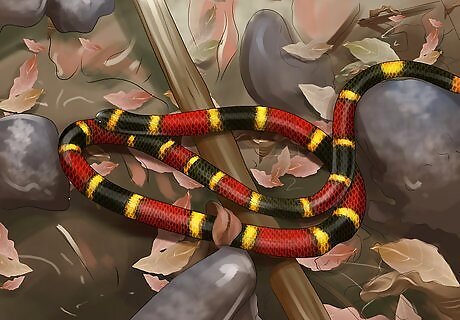
Be wary of logs and leafy areas. Both coral snakes and scarlet king snakes like to spend their daytime hours under logs and leaf piles on the ground. They may also be found in caves and crevices in rocks. Be very careful when lifting a rock or log, or entering an underground space.
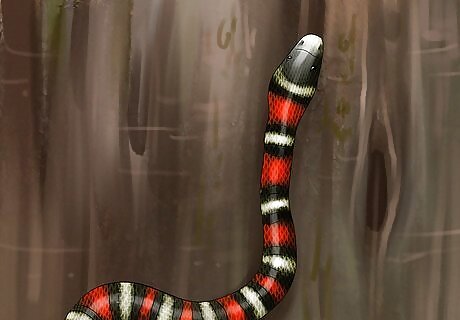
Look for king snakes climbing trees. If you see a colorful snake with a ring pattern climbing a tree, it's probably a nonvenomous king snake. Coral snakes very rarely climb trees. You should still look carefully to make sure it's not a coral snake, and play it safe by not getting too close.
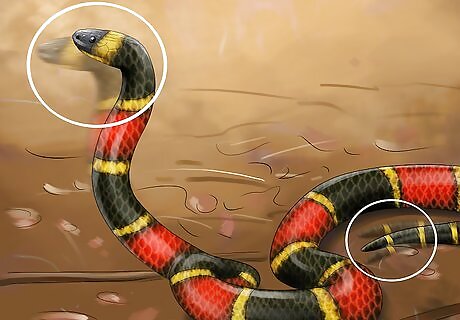
Check for defensive behavior. When coral snakes feel threatened, they move their tails and heads back and forth in order to try to confuse their predators. King snakes don't display this behavior. If you see a snake wagging its head and tail strangely, it's probably a coral, so stay back. Coral snakes are very reclusive, and it's extremely rare to see them in the wild. They only strike when they feel extremely threatened, so if you see one displaying this behavior, you'll probably have time to get away. King snakes received their name because they eat other types of snakes, including venomous ones. They don't tend to display this sort of defensive behavior, although they have been known to hiss and shake their tails like rattlesnakes.
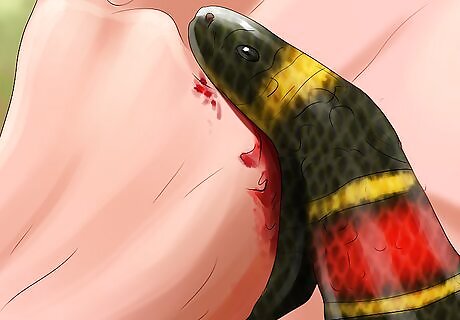
Watch out for a coral snake's distinctive bite. In order to inject its venom, a coral snake must clamp down and chew its prey. Since it's usually possible to fling the snake off before it has time to fully inject venom, people rarely die from coral snake bites. However, left untreated, a coral snake bite can lead to cardiac arrest and death. A coral snake bite is not extraordinarily painful at first. However, if venom has been injected, the victim will experience slurred speech, double vision, and paralysis so even if you don't feel anything after a coral snake bite still call emergency services. If you ever get bitten by a coral snake, stay calm, remove constrictive clothing and jewelry and get medical help immediately.




















Comments
0 comment